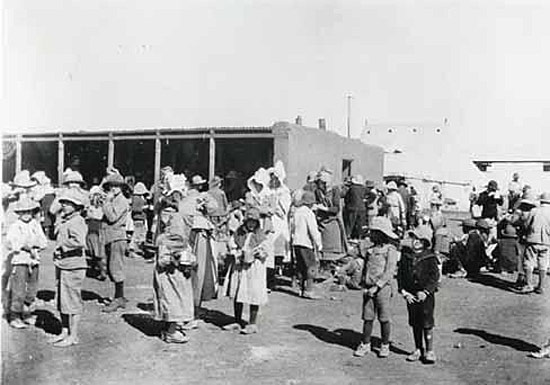
Unit 4: Nationalism, Industrialism, and Imperialism
Lesson C: European Division of the African Continent
Activity 6: Conflict and Resistance in Africa — South Africa
European control of Africa began in the late 19th century. During this time, Europeans sparked conflict as well as encountered resistance by some Africans. In activities 6-9, you will examine some images and sources to learn about conflict and resistance in Africa. For each image, you will consider the actual events as well as the perspectives of the different parties in the events.
South Africa
One of the conflicts in Africa was between two groups of Europeans: the Dutch, who settled in South Africa in the 17th century, and the British, who claimed South Africa as a colony. When the British claimed the Dutch colony, the Dutch (called Boers and Afrikaners) simply moved inland. In the 19th century, diamonds and gold were discovered in the territory that the Dutch occupied. This led the British to claim all of South Africa as their own. This conflict between these two groups eventually became known as the Boer Wars. These wars resulted in victory for the British, but the Dutch fought hard. In the end, the British had more men and far more superior weapons.
Study the image below and respond to the questions that follow.

Boer Women and Children in British Concentration Camp [1]
Written Activity - Notebook
In your notebook, respond to the following questions.
- What is a concentration camp?
- Why do you think Boer women and children would be held in the camps?
- How do you think the British public reacted to this practice?
Page Notes:
[1] Source: This image from http://commons.wikimedia.org/wiki/File:Boercamp1.jpg is in the public domain because its copyright has expired.

